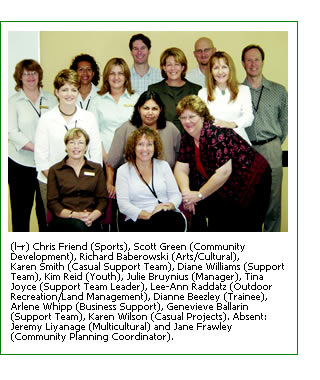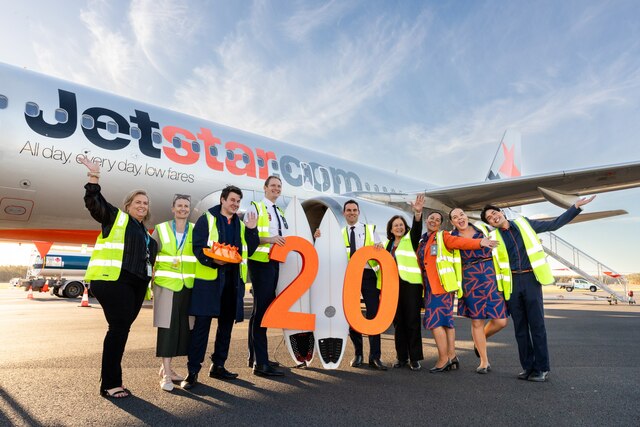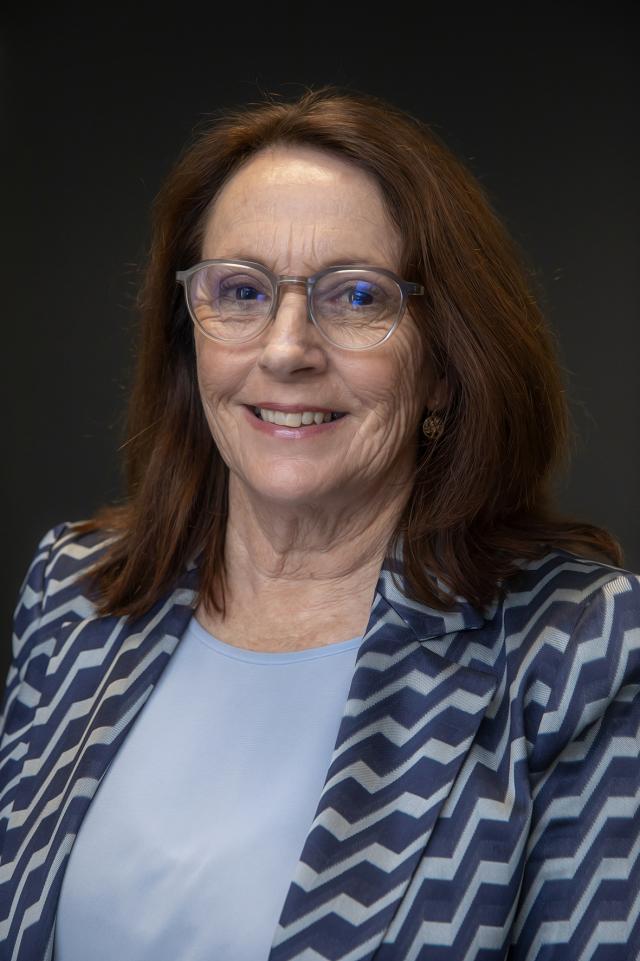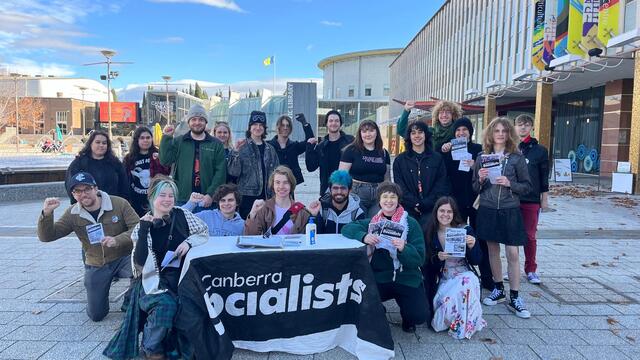At the 2005 Local Government Managers Australia National Congress in Canberra, FOCUS invited delegates to nominate an individual or team from their Council who is improving their Council’s operations and meeting community needs. In this edition, we showcase two more of our competition winners for 2005.
Gracie Valenti, Risk Management Coordinator, Moonee Valley City Council, Victoria
The City of Moonee Valley is a predominant location in Melbourne’s north west. The City encompasses an area of 44 square kilometres and is less than four kilometres from Melbourne’s GPO. With a rich cultural heritage, Moonee Valley has many preserved sites of traditional owners, the Wurundjeri tribes, early settlement and goldrush architecture.
As Council’s Risk Management Coordinator, Gracie Valenti, oversees three key areas: WorkCover, OH&S and Risk Management. Gracie leads a team of four OH&S and Risk Management Officers, addressing risks to Council, its staff and the community.
Moonee Valley CEO, Peter Black, nominated Gracie to appear in FOCUS because she has developed a highly skilled team and introduced new and appropriate systems to substantially turn around Council’s risk management performance record.
“Council’s previous record had not been positive and we didn’t have the resources to improve it,” Peter Black said. “Gracie built a new team, implementing a number of measures, and worked with managers to achieve a great turn around.”
For the period 2003/2004 Moonee Valley had 57 WorkCover claims. In 2004/2005 there was a 32 per cent reduction to 39 claims.
“The severity of injuries has decreased significantly and proactive management of claims has reduced the length of time that injured employees are off work,” Gracie Valenti said. “We have streamlined our preferred injury management and pre employment medical providers and in doing so, we have built quality relationships with these providers. This has assisted employees with suitable rehabilitation and Return to Work Programs and also provides guidance to Council in modifying work practices to reduce the risk of aggravation to pre existing injuries.”
In 2003, Moonee Valley was part of the WorkSafe Focus 100 project. Based on WorkCover claims history and performance, Council was listed as one of the worst 100 performers in Victoria.
Following extensive work in developing Risk Control Plans for every Department and increasing awareness by educating Council on OH&S, WorkSafe Victoria signed Council off the project in July 2004. Council is now positioned mid range in the ‘Improvers’ tier where most Councils sit.
“There are very few Councils in the top level,” Gracie said. “But this is our ultimate goal and we are hungry to achieve it.”
Gracie said one of the major challenges to risk management is reducing premiums.
“We have implemented many systems to decrease the number of WorkCover claims which has led to a reduction in claims costs, however, ultimately I would like to see these results reflected on Council’s premium,” she said. “Major changes implemented across Council have led to an improvement on our Risk Audit Scores, however we are always looking at ways to continually improve our systems.” Council is currently reviewing its Business Continuity Plan.
“For Council to continue to provide services to the citizens and community, we need to have well developed processes in place in the event of a significant disaster,” Gracie Valenti said. “For managers to better manage their business risks and update their progress on how to treat or mitigate them, Council is in the process of purchasing a risk management software package.”
Gracie believes that for risk management to be effective it needs to be recognised and embraced by all members of the organisation.
“Risk management needs to be part of your way of working, not just an add on or a compliance role,” she said. “We are working hard to change people’s perception of safety and risk management within the organisation. Our role as a Risk Management Unit is to support all Departments in establishing tailored systems that address service specific risks. Peter Black has a strong commitment to OH&S and Risk Management initiatives; he has a genuine interest in the area and has openly displayed his commitment to management and staff. This makes my job so much easier. It is not just the success of my team, there are all those in the organisation who have worked hard to implement the initiatives and systems from the Risk Management Unit to achieve the successes we have had so far.”
Community Development Unit, Caboolture Shire, Queensland
Caboolture Shire is a fast growing area north of Brisbane in the rapidly developing southeast Queensland coastal corridor. It boasts a relaxed, yet rich and diverse lifestyle, with golden beaches and stunning mountain scenery. Caboolture Shire’s affordable living, quality residential developments, strong commercial activity and direct access to Brisbane and the Sunshine Coast are all key catalysts for continued ongoing growth. The Shire’s population in 2005 is estimated at 130,000, with projections it will exceed 200,000 by 2026.
General Manager of Planning, Simon Banfield, nominated Council’s Community Development Unit to appear in FOCUS. He said the team has excelled in best practice community development initiatives in the region. Council was recently awarded the 2005 Queensland Multicultural Award for its innovative multicultural projects and programs.
The unit was recently involved in construction of the Maota Fono facility, the first Samoan meeting house outside of Samoa.
“The Maota Fono was an innovative and exciting project,” said Manager Community Development, Julie Bruynius. “In Samoa this is a wooden traditional design structure used by chiefs. But the one constructed combined modern materials and design to capture traditional elements. It is a multi purpose facility and caters for wide community use. The Samoan community is involved in running, managing and maintaining the house, and so far it has been used for training events, youth programs, functions and by community ambassadors.”
The team of 12 includes five planners in youth, sports, outdoor recreation, community, arts and cultural affairs and multiculturalism. There is also a Community Development Officer, Business Support Officer and three support team officers, with an administration trainee.
Julie Bruynius said that the unit’s two key roles are Community Strengthening (programs, events and initiatives) and Community Planning (research and profiling). She said that there are several challenges currently facing the team.
“The growing population has bought with it increased social needs, pressure on services and demands for facilities and we are faced with providing programs to meet these needs,” she said. “We are also dealing with an increased amount of volatile substance misuse by young people and a demand for multicultural activities.
“We have set up a youth advisory group which is now in its second year. This program provides mentoring and training for young people. It aims to provide opportunities that ensure young people participate in the decision making process within their community.”
Julie believes the key factors for a successful Community Development Unit are comprehensive planning to identify needs, community trust, a supportive Council and dedicated staff.
“The programs that we provide and the time we put into these efforts allows us to develop a level of trust with the community,” she said. “The community needs to see things are happening and our meetings are not just talk fests. Although sometimes projects like the maota fano may take longer than expected, the trust that we have developed provides greater understanding on the part of the community.”
Julie Bruynius said that the demands on Local Government for basic services are also increasing. “The Community Development Team sometimes finds itself competing against other services,” she said. “The inflated cost of services and the growing population can sometimes mean that Community Development takes second place because of costs. “It can often take a long time before Council and the community see results of projects and thus we can be pushed aside.”








